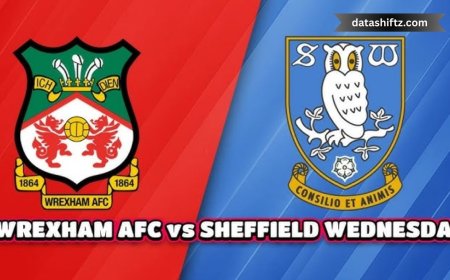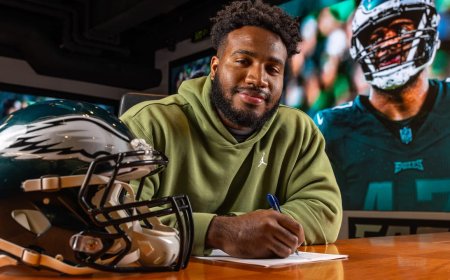Supreme: The Iconic Streetwear Brand That Redefined Fashion Culture

Introduction
Few brands have captured the imagination of youth, fashion enthusiasts, and cultural tastemakers quite like Supreme. Founded in 1994 as a small skate shop in downtown Manhattan, Supreme has evolved into a global streetwear empire, bridging the worlds of fashion, skateboarding, hip-hop, art, and youth rebellion. Its signature red box logo, often accompanied by long lines, hyped collaborations, and record-breaking resale prices, has become synonymous with exclusivity and cultural cool.
This blog post explores the journey of Supreme—from its underground roots to its global takeover. We'll delve into its history, brand philosophy, business model, collaborations, and cultural significance, with comprehensive lists, tables, and breakdowns that showcase what makes Supreme so iconic.
The Origins of Supreme
A Skate Brand with a New York Attitude
Supreme was founded in 1994 by James Jebbia, an English-American entrepreneur who previously worked with streetwear labels like Stüssy and Union NYC. The first store opened on Lafayette Street in New York City, specifically catering to skateboarders, with a unique layout that left room for skaters to ride inside the store.
The brand's early product lines included graphic T-shirts, hoodies, beanies, and skate decks, often featuring bold, provocative designs. The box logo, inspired by artist Barbara Kruger’s work, quickly became a symbol of underground credibility.
Supreme’s Business Philosophy
“Less Is More” – The Scarcity Model
Unlike mainstream fashion brands that mass-produce clothing, Supreme thrives on limited releases, often known as "drops." New items are released once a week—typically on Thursdays—both in stores and online.
This scarcity model has created a sense of urgency and exclusivity, fueling demand and astronomical resale prices. Items often sell out within minutes, leading to long queues and even campouts outside Supreme stores.
Product Range and Collaborations
What Does Supreme Sell?
Supreme offers a wide range of apparel and lifestyle products, including:
-
Hoodies
-
T-shirts
-
Jackets
-
Skateboards
-
Hats and accessories
-
Home goods (e.g., bricks, toolboxes, nunchucks)
But what truly sets Supreme apart is its collaborative spirit.
Most Iconic Supreme Collaborations
| Collaboration Partner | Year | Highlight Product | Impact |
|---|---|---|---|
| Nike | Ongoing | Supreme x Air Force 1 | Bridged sneaker culture with streetwear |
| Louis Vuitton | 2017 | Monogram Box Logo Hoodie | Luxury meets streetwear milestone |
| The North Face | Annual | Steep Tech Jackets, Backpacks | Fused functionality with hype |
| Comme des Garçons | 2012–2020 | Split Box Logo Tees | High-fashion credibility |
| Timberland | Ongoing | Custom 6-Inch Boots | Street utility meets classic footwear |
| Vans | Ongoing | Custom Sk8-Hi and Old Skool models | Skateboard roots reinforced |
| Burberry | 2022 | Trench Coats, Tees | British heritage collides with NYC grit |
Supreme's Expansion and Global Reach
From its humble beginnings, Supreme has grown to operate 12 flagship stores worldwide, including locations in:
-
New York City (Lafayette & Brooklyn)
-
Los Angeles
-
San Francisco
-
London
-
Paris
-
Milan
-
Tokyo (3 stores)
-
Osaka
-
Berlin
Its online store, launched in 2006, also serves a global customer base, albeit with extremely limited stock.
The Resale Economy and Supreme
The Rise of Hype Culture
Supreme has arguably redefined the resale economy. Items purchased for $40–$150 at retail can resell for hundreds or even thousands of dollars, depending on rarity and demand. The brand's collaborations, especially with luxury houses like Louis Vuitton, can fetch prices in the five-digit range.
Most Expensive Supreme Resale Items
-
Supreme x Louis Vuitton Trunk – Over $90,000
-
Supreme x Louis Vuitton Monogram Hoodie – $15,000+
-
Supreme x Nike SB Dunk Low (White/Red) – $6,000+
-
Supreme Pinball Machine – $40,000
-
Supreme x Fender Stratocaster Guitar – $15,000
-
Supreme x RIMOWA Luggage – $3,000–$6,000
-
Supreme x Everlast Punching Bag – $8,000
-
Supreme x Brooklyn Box Logo Tee – $5,000+
Cultural Impact of Supreme
Supreme isn’t just a fashion brand; it’s a cultural phenomenon.
Influence in Music and Art
Supreme’s imagery and aesthetic draw heavily from punk rock, hip-hop, and skateboarding subcultures. Artists and celebrities like Tyler, The Creator, Kanye West, Rihanna, and A$AP Rocky have been spotted in Supreme gear, further boosting its cult status.
The brand has also collaborated with iconic artists such as Jean-Michel Basquiat, Takashi Murakami, and KAWS, elevating Supreme into the realm of contemporary art.
Supreme in Media
Supreme has been featured in documentaries and books, including:
-
"Supreme: Downtown New York Skate Culture"
-
"The T-Shirt as Medium"
-
"The Story of Supreme" on Complex and Vice documentaries
These media explorations reveal how Supreme became a canvas for youth identity, rebellion, and creative self-expression.
Supreme’s Acquisition by VF Corporation
In November 2020, Supreme was acquired by VF Corporation—the parent company of Vans, The North Face, and Timberland—for $2.1 billion. The acquisition raised questions about whether the brand could retain its underground cool under a corporate umbrella.
So far, Supreme has continued its tradition of limited drops and collaborations, but some fans worry about "selling out" or losing the brand’s edge.
Supreme’s Controversies and Criticism
While Supreme enjoys cult-like loyalty, it’s not without criticism.
Controversies Include:
-
Exclusivity and Accessibility: Many believe Supreme caters to elitist hypebeasts rather than skaters or artists.
-
Cultural Appropriation: Supreme has faced backlash for using cultural symbols without context.
-
Trademark Battles: The brand has fought multiple international lawsuits over its logo, including in Italy and China.
-
Scalping and Bots: Online drops are often ruined by resellers using bots to instantly purchase items.
What Makes Supreme So Unique?
10 Reasons Why Supreme Remains Iconic
-
Limited Edition Drops – Creates scarcity and exclusivity
-
Bold Designs – Provocative, unapologetic, and instantly recognizable
-
Celebrity Endorsements – Worn by musicians, athletes, and actors
-
Artistic Collaborations – Merges fashion with high art
-
Rooted in Skate Culture – Authentic foundation keeps core fan base engaged
-
High-Quality Materials – Elevated product construction and longevity
-
Global Flagship Stores – Carefully chosen locations add mystique
-
Controversy and Mystery – Keeps the brand in constant conversation
-
Crossover into Luxury – From hoodies to haute couture
-
Timeless Appeal – Despite evolving, Supreme stays relevant across generations
Key Facts About Supreme
| Attribute | Description |
|---|---|
| Founder | James Jebbia |
| Year Established | 1994 |
| Headquarters | New York City |
| Flagship Store Count | 12 (as of 2024) |
| Parent Company | VF Corporation (since 2020) |
| Notable Collaborations | Nike, Louis Vuitton, The North Face, KAWS |
| Primary Market | Streetwear, Skate Culture, Youth Fashion |
| Known For | Box logo, limited drops, high resale value |
| Estimated Valuation | $2.1 Billion (at time of acquisition) |
| Weekly Drop Day | Thursdays (in-store and online) |
The Future of Supreme
As Supreme matures under the ownership of VF Corporation, questions remain about how the brand will balance authenticity with scalability. Will it continue to thrive as a symbol of underground culture, or will it become a mainstream commodity?
New collaborations, tech integrations (such as NFT drops), and global market expansion may define Supreme’s next chapter.
One thing is certain—Supreme has already cemented its place in the fashion pantheon, and its influence shows no signs of fading.
Conclusion
Supreme started as a modest skate shop and became a multi-billion-dollar global brand, not just because of clever marketing, but because it represents a lifestyle, attitude, and movement. It’s a brand that thrives on contradiction—exclusive yet universal, rebellious yet strategic, underground yet mainstream.





























